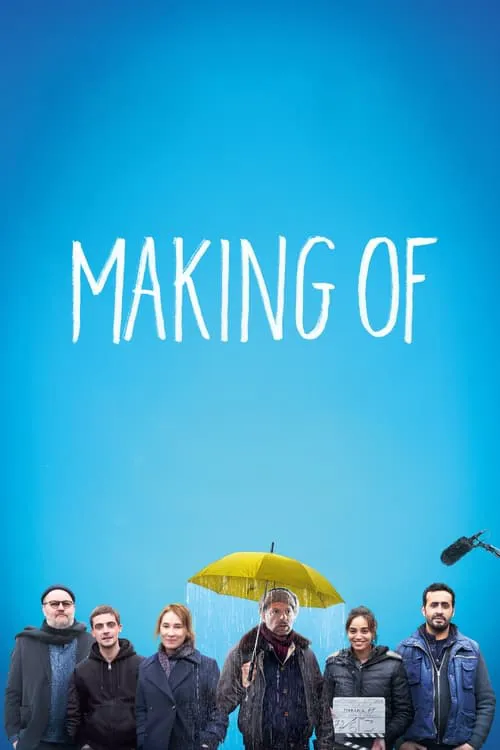Making Of

Plot
Simon, a renowned French filmmaker, stands on the cusp of completing his latest magnum opus. The project, a poignant story about the resilience of workers fighting to preserve their factory from being relocated, is close to reaching the final stages of production. However, Simon soon finds himself entangled in an intricate web of problems that threaten to derail the entire project. His producer, Viviane, a master manipulator with a penchant for rewriting the script, has her sights set on altering the film's conclusion to something more financially viable. Her motives are driven by the prospect of maximizing profits, rather than adhering to Simon's artistic vision. Viviane's attempts to sabotage Simon's creative control are met with resistance, but her persistence eventually starts to take its toll on the director's mental state. Meanwhile, the crew members are growing increasingly frustrated with the production's disorganization and Simon's inability to manage the chaos. A wave of discontent sweeps through the set, and the crew eventually decides to down tools, staging a work stoppage. The absence of a unified front from the crew forces Simon to confront the harsh realities of his own ineptitude, a humbling experience that leaves him questioning his leadership capabilities. On a personal level, Simon's life is in shambles. His relationships with his loved ones are beginning to fray, and the pressure of delivering a successful film takes a toll on his relationships. His partner, Caroline, a fellow filmmaker, tries to offer some level-headed advice, but Simon is too consumed by his own creative anxieties to absorb her words of wisdom. Adding insult to injury is the presence of Alain, the lead actor, who embodies the traits that Simon despises most in people. Alain's inflated ego and penchant for theatrics create an unbearable atmosphere on the set, constantly testing the limits of Simon's patience. As the production descends further into chaos, tensions between Simon and Alain reach an all-time high, threatening to implode the entire project. In the midst of this maelstrom, Joseph, an extra with a keen eye for filmmaking, quietly observes the chaos unfolding around him. Joseph has long harbored ambitions to break into the film industry, and an opportunity presents itself when he is approached by Simon to film the behind-the-scenes of the production. This role is more than a trivial task; it becomes Joseph's chance to immerse himself in the world of filmmaking and to learn the intricacies of directing. Joseph seizes this opportunity with both hands, taking his role very seriously. Armed with a keen sense of observation and an eagerness to learn, he chronicles every detail of the production, capturing the nuances of the relationships between the crew members, the conflicts that emerge, and the chaos that ensues. Joseph's fly-on-the-wall approach provides a riveting behind-the-scenes look at the making of Simon's latest film. As the days turn into weeks, Joseph becomes increasingly entrenched in the lives of the crew members. He starts developing an emotional connection with the key players involved in the project, gaining insight into their vulnerabilities and insecurities. Through his interactions with the crew, Joseph begins to understand the very essence of filmmaking – the art of weaving a compelling narrative that transcends the confines of the screen. Through his observations, Joseph realizes that the making of Simon's film is, in reality, the main story – a narrative filled with drama, suspense, and unexpected twists. As the production inches closer to its conclusion, Joseph begins to see that his own film, a behind-the-scenes look at the chaos on the set, may just surpass the original story in terms of emotional resonance and cinematic appeal. The film ultimately becomes a testament to the transformative power of storytelling, where the making of can indeed be far better than the film itself.
Reviews
Recommendations




